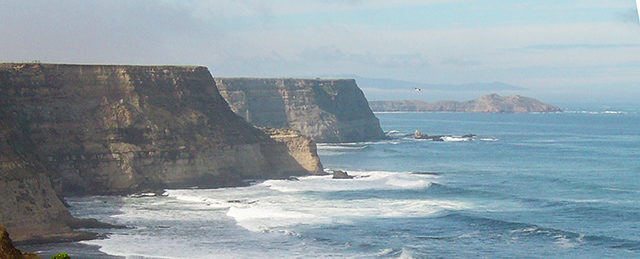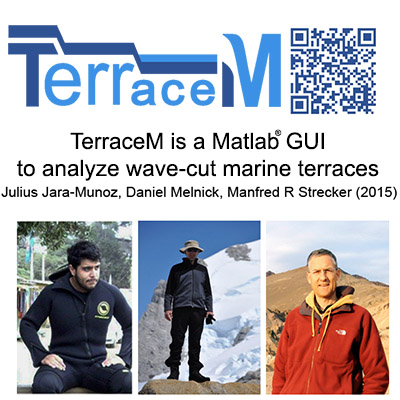Search
Feeds
Archives
About
Links
About
Monday 17 August 2015 at 5:26 pm.
About TerraceM:
A Matlab® interface for mapping and modeling marine and lacustrine terraces using high resolution topography. TerraceM has been designed by Dr. Julius Jara-Muñoz, with the cooperation of Professors Daniel Melnick Kevin Pedoja and Manfred Strecker from universities in France, Chile, and Germany.
To date, Light Detection And Ranging (LiDAR), high- resolution topographic data sets enable remote identification of submeter-scale geomorphic features bringing valuable information of the landscape and geomorphic markers of tectonic deformation such as fault-scarp offsets, fluvial and marine terraces. Recent studies of marine terraces using LiDAR data have demonstrated that these landforms can be readily isolated from other landforms in the landscape, using slope and roughness parameters that allow for unambiguously mapping regional extents of terrace sequences. Marine terrace elevation has been used since decades as geodetic benchmarks of Quaternary deformation. Uplift rates may be estimated by locating the shoreline angle, a geomorphic feature correlated with the high-stand position of past sea levels.
Indeed, precise identification of the shoreline-angle position is an important requirement to obtain reliable tectonic rates and coherent spatial correlation. To improve our ability to rapidly assess and map different shoreline angles at a regional scales we have developed the TerraceM application. TerraceM is a Matlab interface that allows estimating the shoreline angle and its associated error using high-resolution topography, and modelling the deformation patterns and the development of marine terraces. For convenience, TerraceM includes several modules each one with its own Graphical User Interface (GUI) and independent function for custom worflows.

About the author:
Dr. Julius Jara-Muñoz is a senior researcher with broad experience in the field and in software programming, currently stablished at the University of Potsdam by an own position funded by the DFG (German Education Ministry). His research focuses on studying surface deformation processes in tectonically active areas from different perspectives using multidisciplinary approaches.
